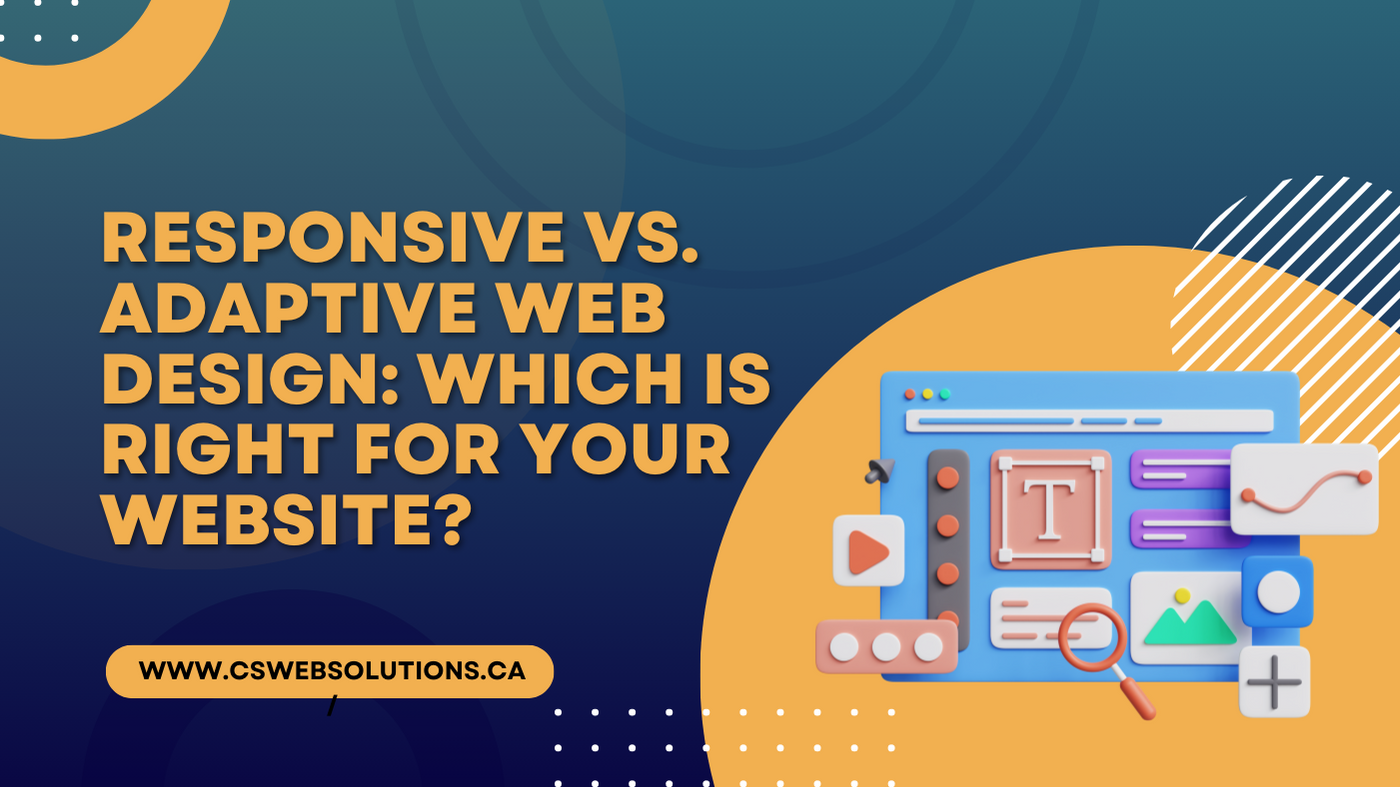In the dynamic world of web design, staying ahead of the curve is essential to provide users with the best possible experience. Two key approaches, responsive web design and adaptive web design, have emerged to address the challenge of designing websites for an ever-expanding range of devices and screen sizes. But which approach is right for your website? In this blog post, we’ll explore the differences between responsive and adaptive web design and help you decide which one suits your needs best.
Understanding Responsive Web Design
Responsive web design is an approach that aims to create websites that adapt and respond to different screen sizes and orientations. This design method uses fluid grids, flexible layouts, and media queries to adjust the website’s content and layout based on the user’s device. The core principle behind responsive design is to ensure that a website looks and functions well on any screen, from a large desktop monitor to a small smartphone.
Is My Website Adaptive or Responsive?
To determine if your website is responsive, you can perform a simple test. Open your website on various devices, such as a desktop computer, laptop, tablet, and smartphone. Observe how the layout and content adjust to fit each screen size. If your website seamlessly adapts to different screens, it’s responsive.
Is It Good to Have a Responsive Website? Why?
Having a responsive website is highly recommended for several reasons:
1. Better User Experience: Responsive design ensures that your website is accessible and functional on all devices, providing a consistent and user-friendly experience. Users are more likely to stay engaged and convert when they can easily navigate your site.
2. Improved SEO: Google values user experience, and responsive design plays a significant role in SEO rankings. A responsive website is more likely to rank higher in search results, leading to increased organic traffic.
3. Cost-Effective: Maintaining a single responsive website is more cost-effective than creating multiple versions for different devices. It streamlines development and reduces long-term maintenance expenses.
4. Future-Proof: With the ever-evolving landscape of devices and screen sizes, responsive design is adaptable to new technologies and resolutions. Your website can remain relevant without the need for constant updates.
Does Google Prefer Responsive Websites?
Yes, Google does prefer responsive websites for several reasons:
1. Mobile-First Indexing: Google has shifted to a mobile-first indexing approach, meaning it primarily uses the mobile version of your site for ranking and indexing. A responsive design ensures that your desktop and mobile content is consistent, which aligns with Google’s preferences.
2. Easier Crawling and Indexing: Google’s crawlers can efficiently navigate and index responsive websites because they have a single URL structure and HTML codebase. This simplifies the search engine’s job, resulting in better rankings and visibility.
3. Improved User Experience: Google aims to provide its users with the best possible experience, and responsive websites deliver a consistent experience across all devices. This aligns with Google’s goal of delivering high-quality search results.
Understanding Adaptive Web Design
Adaptive web design, on the other hand, focuses on creating distinct layouts and designs for specific device categories or screen sizes. Instead of a single, flexible layout, adaptive design offers multiple layouts tailored to various breakpoints or device categories. When a user visits an adaptive website, the server detects their device and serves the appropriate layout.
Is My Website Adaptive or Responsive?
To determine if your website is adaptive, you can follow a similar testing process as for responsiveness. Open your website on various devices and observe if it offers different layouts for different screens. If your website provides custom layouts based on device categories, it’s adaptive.
Why Is Adaptive Web Design Better?
Adaptive web design offers several advantages, making it a suitable choice for certain scenarios:
1. Targeted User Experience: Adaptive design allows for highly targeted user experiences. You can optimize the layout and content specifically for each device category, ensuring the best possible presentation and interaction.
2. Performance Optimization: By tailoring layouts to different devices, you can optimize performance. For instance, you can deliver smaller image sizes to mobile devices, reducing load times and improving user satisfaction.
3. Enhanced Control: Adaptive design gives you greater control over how your website appears on various devices. This level of control can be particularly beneficial when crafting a unique experience for specific devices, such as tablets or high-resolution desktop screens.
Choosing Between Responsive and Adaptive Web Design
The choice between responsive and adaptive web design depends on your website’s goals, target audience, and content. Here are some key factors to consider when making your decision:
1. Audience and Usage: Consider your target audience’s devices and usage patterns. If most of your users access your website on a wide range of devices, responsive design may be the better choice. If you have a strong focus on specific device categories, adaptive design may offer a more tailored experience.
2. Content and Complexity: Evaluate your website’s content and complexity. If your content and features remain consistent across devices, responsive design simplifies maintenance. However, if you require distinct layouts and functionality for different devices, adaptive design provides more control.
3. Budget and Resources: Consider your budget and available resources for development and maintenance. Responsive design typically requires less initial investment and ongoing maintenance compared to adaptive design.
4. Long-Term Flexibility: Think about the long-term flexibility of your design. If you anticipate significant changes in device types and screen sizes, responsive design may provide better future-proofing.
5. SEO Goals: If SEO is a top priority, keep in mind that responsive design aligns well with Google’s mobile-first indexing, potentially leading to better search rankings.
In conclusion, both responsive and adaptive web design approaches have their merits and can be effective depending on your website’s specific needs and goals. It’s crucial to assess your target audience, content, and resources before making a decision. Regardless of your choice, prioritizing a seamless user experience should always be at the forefront of your web design strategy.

